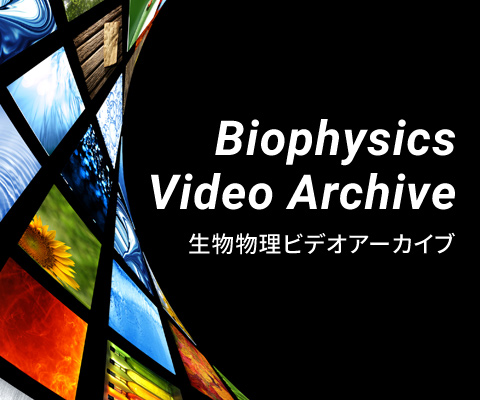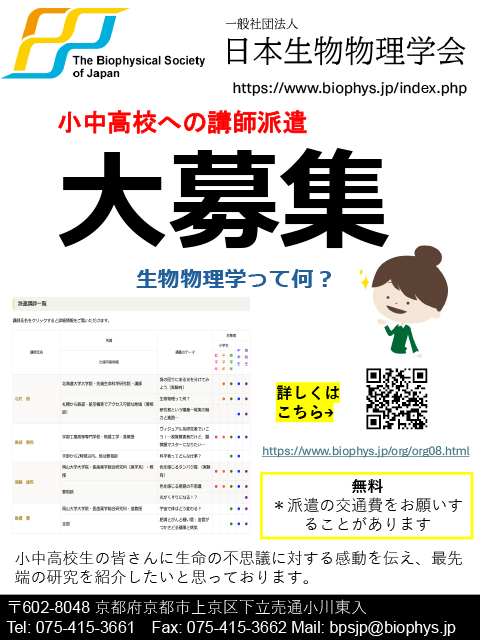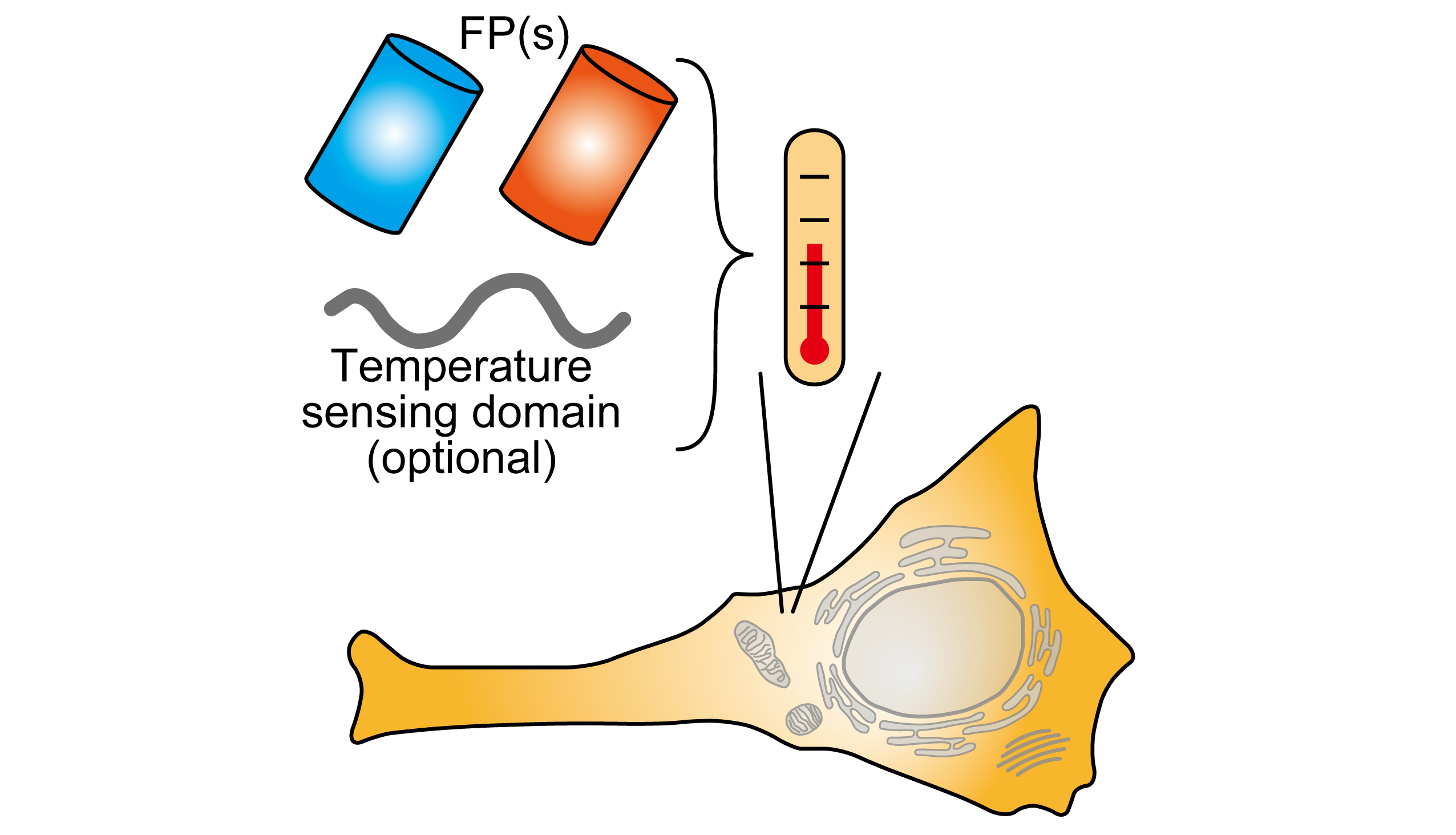男女共同参画学協会連絡会
支援企業による広告記事
- ソーラボジャパン株式会社
- CAD を使って光学装置を設計してみよう
- 「生物物理」2025年10月号
- ソーラボジャパン株式会社
- 次世代2光子顕微鏡―小型化がもたらす新たな可能性
- 「生物物理」2024年10月号
- ソーラボジャパン株式会社
- サイエンティフィックカメラと周辺機器の同期
- 「生物物理」2023年10月号
- ソーラボジャパン株式会社
- 顕微鏡のリノベーション ~ 顕微鏡ポートを活用した光学系の導入
- 「生物物理」2022年12月号
「Biophysics and Physicobiology」に Tetsuichi Wazawa, Ryohei Ozaki-Noma, Lu Kai, Shun-ichi Fukushima, Tomoki Matsuda, Takeharu Nagai による "Genetically-encoded temperature indicators for thermal biology" をJ-STAGEの早期公開版として掲載
2025年04月08日 学会誌
日本生物物理学会欧文誌[Biophysics and Physicobiology]に以下の論文が早期公開されました。
Tetsuichi Wazawa, Ryohei Ozaki-Noma, Lu Kai, Shun-ichi Fukushima, Tomoki Matsuda, Takeharu Nagai
"Genetically-encoded temperature indicators for thermal biology"
URL:https://doi.org/10.2142/biophysico.bppb-v22.0008
- Abstract
- Temperature crucially affects molecular processes in living organisms and thus it is one of the vital physical parameters for life. To investigate how temperature is biologically maintained and regulated and its biological impact on organisms, it is essential to measure the spatial distribution and/or temporal changes of temperature across different biological scales, from whole organism to subcellular structures. Fluorescent nanothermometers have been developed as probes for temperature measurement by fluorescence microscopy for applications in microscopic scales where macroscopic temperature sensors are inaccessible, such as embryos, tissues, cells, and organelles. Although fluorescent nanothermometers have been developed from various materials, fluorescent protein-based ones are especially of interest because they can be introduced into cells as the transgenes for expression with or without specific localization, making them suitable for less-invasive temperature observation in living biological samples. In this article, we review protein-based fluorescent nanothermometers also known as genetically-encoded temperature indicators (GETIs), covering most published GETIs, for developers, users, and researchers in thermal biology as well as interested readers. We provide overviews of the temperature sensing mechanisms and measurement methods of these protein-based fluorescent nanothermometers. We then outline key information for GETI development, focusing on unique protein engineering techniques and building blocks distinct to GETIs, unlike other fluorescent nanothermometers. Furthermore, we propose several standards for the characterization of GETIs. Additionally, we explore various issues and offer perspectives in the field of thermal biology.
URL: https://doi.org/10.2142/biophysico.bppb-v22.0008







